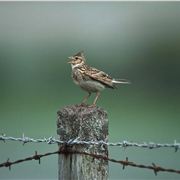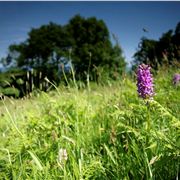NUMBERS of skylarks, hedgehogs, brown hares and water voles have fallen sharply on Merseyside, with intensive farming methods in the region to blame.
That is one of the conclusions of a ground-breaking national report, published today, by a coalition of leading conservation and research organisations.
 SkylarkScientists working side-by-side from 25 wildlife organisations have compiled a stock take of species native to the British Isles – the first of its kind in the UK. The report reveals that 60pc of the 1,064 species studied have declined over recent decades. More than one in ten of all the species assessed are under threat of disappearing from our shores altogether.
SkylarkScientists working side-by-side from 25 wildlife organisations have compiled a stock take of species native to the British Isles – the first of its kind in the UK. The report reveals that 60pc of the 1,064 species studied have declined over recent decades. More than one in ten of all the species assessed are under threat of disappearing from our shores altogether.
Here on Merseyside, experts are particularly concerned about the state of nature in farmland areas. Arable farming is abundant in Sefton, Wirral and Knowsley and the removal of hedgerows and the alteration of water courses is cited for the dramatic change in the population of flora and fauna.
Fraction
David Morris, the RSPB’s conservation manager for North West England, said: “Many of the species that are in trouble live in the extensive farmland areas of the county. These range from skylarks to hedgehogs and brown hares. If we want to reverse these declines we need to ensure that farmers are given sufficient resources and support to be able to manage their land in a wildlife-friendly way.”
Anne Selby, Chief Executive for the Wildlife Trust for Lancashire, Manchester and North Merseyside, said: “Our Trust has been involved in major projects to help these species recover and prosper. The region is still a stronghold for hares and water voles but numbers are a fraction of what they used to be. Many farmers have worked with us to try to reverse these declines.”
The State of Nature report is being launched by Sir David Attenborough and UK conservation charities at the Natural History Museum in London this evening (May 22), while simultaneous events will be held in Edinburgh, Cardiff and Belfast.
 Where have all the flowers gone? Farmland near Meols on Wirral
Where have all the flowers gone? Farmland near Meols on Wirral
Dr Mark Eaton, a lead author on the report, said: “These declines are happening across all countries and UK Overseas Territories, habitats and species groups, although it is probably greatest amongst insects, such as our moths, butterflies and beetles. Other once common species like the lesser spotted woodpecker, garden tiger moth and hedgehog are vanishing before our eyes.
“Reliable data on these species goes back just fifty years, at most, but we know that there has been a historical pattern of loss in the UK going back even further. Threats including sweeping habitat loss, changes to the way we manage our countryside, and the more recent impact of climate change, have had a major impact on our wildlife, and they are not going away.”
Where did it all go wrong?
SINCE the War, there have been many far-reaching changes to the way the UK’s countryside is farmed. While some factors affect a wide range of species, others have more specific impacts, says the report.

For example, depending on the time that silage and hay is cut, harvesting machinery can destroy the nests and young of birds, such as skylarks, and bumblebees. The biology of some species makes them particularly vulnerable to certain threats: for example, adders hibernate communally at traditional sites, so destruction of a relatively small area of habitat can have a huge influence on the local population.
Although there are still some farming systems that are of high value for nature, most of the changes can be attributed to a drive to maximise yields.
Impacts
Modern agriculture tends to simplify the landscape, with larger machinery and more specialised farming systems taking over from traditional mixed farming methods.
 Short-Haired Bumble BeeThese changes have increased agricultural yields substantially, but they have also had unintended consequences for the environment. By identifying the harmful impacts of this intensification, the report's authors say it is possible to work with farmers to find solutions that help them to manage their land for efficient, sustainable food production as well as wildlife.
Short-Haired Bumble BeeThese changes have increased agricultural yields substantially, but they have also had unintended consequences for the environment. By identifying the harmful impacts of this intensification, the report's authors say it is possible to work with farmers to find solutions that help them to manage their land for efficient, sustainable food production as well as wildlife.
But it's not all bad news, the report adds: There are also many species whose populations are stable, as well as those that have increased in recent years.
The woodpigeon has increased by 130pc since 1970 thanks to modern agricultural practices, as have nitrogen-loving plants such as black grass.
Recent changes to the climate may be benefiting some farmland butterflies such as the ringlet and speckled wood, and southern species in some other taxonomic groups such as flies show similar range increases.















